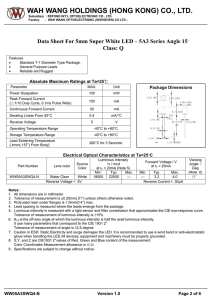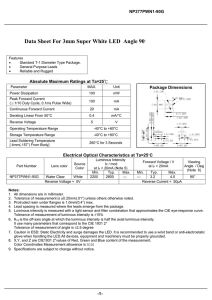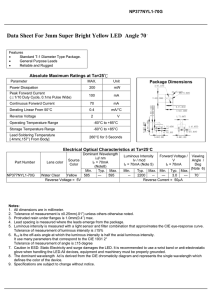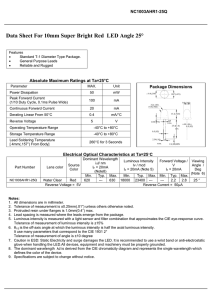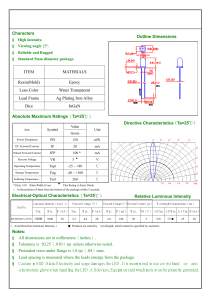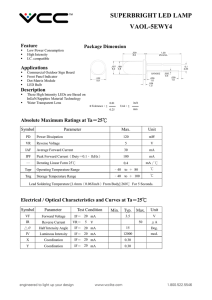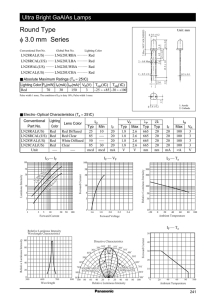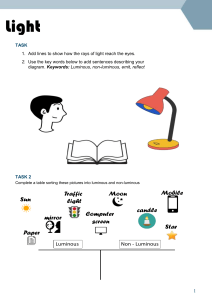How LED Emits Light
advertisement
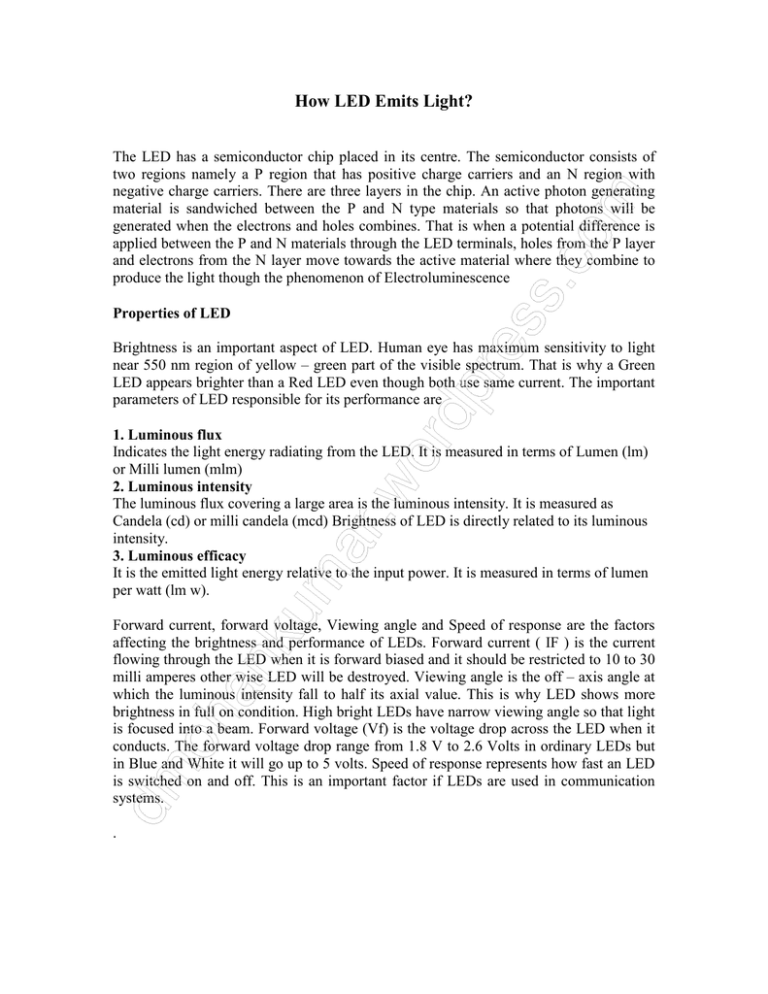
How LED Emits Light? The LED has a semiconductor chip placed in its centre. The semiconductor consists of two regions namely a P region that has positive charge carriers and an N region with negative charge carriers. There are three layers in the chip. An active photon generating material is sandwiched between the P and N type materials so that photons will be generated when the electrons and holes combines. That is when a potential difference is applied between the P and N materials through the LED terminals, holes from the P layer and electrons from the N layer move towards the active material where they combine to produce the light though the phenomenon of Electroluminescence Properties of LED Brightness is an important aspect of LED. Human eye has maximum sensitivity to light near 550 nm region of yellow – green part of the visible spectrum. That is why a Green LED appears brighter than a Red LED even though both use same current. The important parameters of LED responsible for its performance are 1. Luminous flux Indicates the light energy radiating from the LED. It is measured in terms of Lumen (lm) or Milli lumen (mlm) 2. Luminous intensity The luminous flux covering a large area is the luminous intensity. It is measured as Candela (cd) or milli candela (mcd) Brightness of LED is directly related to its luminous intensity. 3. Luminous efficacy It is the emitted light energy relative to the input power. It is measured in terms of lumen per watt (lm w). Forward current, forward voltage, Viewing angle and Speed of response are the factors affecting the brightness and performance of LEDs. Forward current ( IF ) is the current flowing through the LED when it is forward biased and it should be restricted to 10 to 30 milli amperes other wise LED will be destroyed. Viewing angle is the off – axis angle at which the luminous intensity fall to half its axial value. This is why LED shows more brightness in full on condition. High bright LEDs have narrow viewing angle so that light is focused into a beam. Forward voltage (Vf) is the voltage drop across the LED when it conducts. The forward voltage drop range from 1.8 V to 2.6 Volts in ordinary LEDs but in Blue and White it will go up to 5 volts. Speed of response represents how fast an LED is switched on and off. This is an important factor if LEDs are used in communication systems. .
